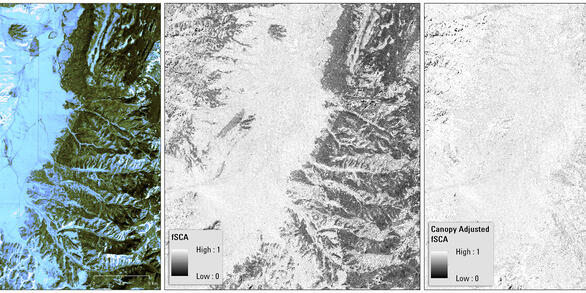Landsat Fractional Snow Covered Area Science Products
Snow cover is spatially and temporally variable and is often concentrated in remote or inaccessible land regions making spaceborne remote sensing the most feasible approach to measure and monitor snow cover change. Landsat’s spatial resolution offers the capability to resolve snow cover patterns across topographically complex mountainous regions.





